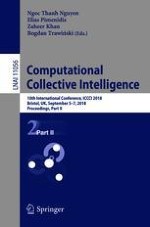This two-volume set (LNAI 11055 and LNAI 11056) constitutes the refereed proceedings of the 10th International Conference on Collective Intelligence, ICCCI 2018, held in Bristol, UK, in September 2018
The 98 full papers presented were carefully reviewed and selected from 240 submissions. The conference focuses on knowledge engineering and semantic web, social network analysis, recommendation methods and recommender systems, agents and multi-agent systems, text processing and information retrieval, data mining methods and applications, decision support and control systems, sensor networks and internet of things, as well as computer vision techniques.
